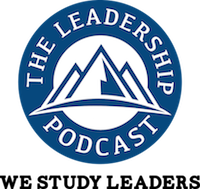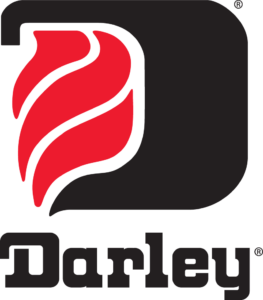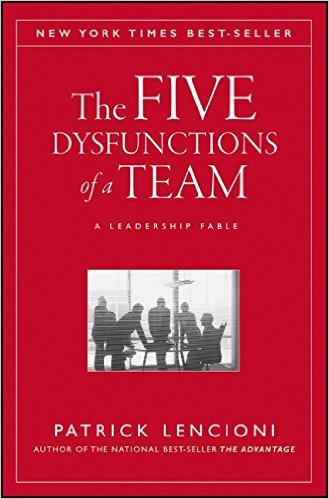
Erin Shrimpton is a chartered organizational psychologist and a LinkedIn Learning Instructor. Erin has a passion for shaping culture that is true to the brand it represents and strategy it supports. In this episode, Erin shares what she’s learned about the workplace experience, and how culture is created and influenced by the behavior leaders model. Listen in for a dynamic conversation regarding the psychological aspects of how the environment, and connections truly shape culture.
Key Takeaways
[2:25] Erin was recommended to Jan and Jim by Dean Karrel, another LinkedIn Learning instructor. Jan and Erin have an Irish connection. Jan took students to study abroad in Dublin, Belfast, and Galway to compare and contrast the business and cultural environments between the U.S. and Ireland. Erin was born in Ireland and is based there.
[3:41] Erin loves the Beatles! Particularly, The White Album. Erin considers that everybody has some sort of connection with the Beatles.
[6:05] Erin talks about changing the experience to change the culture. Recent neuroscience research shows that much of the way we behave is shaped by our experiences. Our experience shapes the pathways in our brains, so much more than we knew before. Apply that to what we experience every day in the workplace.
[7:21] Who owns the experiences we have at work? The CEO and senior leaders, HR, IT, Facilities, your manager, and your colleagues. Your colleagues are a large part of your experience. You may be powerless to change the direction of the organization, but you can change your experience with your colleagues. If you’re a great team leader, you can empower them to change their experience, every day.
[9:01] Empowering your team to have great experiences may not change the wider culture but when you work together to change the little things about how you interact with each other, you start to catalyze change, because other teams are looking at you. This changes the culture from the ground up.
[9:35] Jan refers to a recent NY Times article on assessing job satisfaction and why employees leave. A big factor is that the values the employees have are not the same as the values of the organization. When that happens, Jan tells clients there are three choices: they can work to change things, they can accept things, or they can seek employment elsewhere.
[10:34] Erin’s first “port of call” in a similar case is always to examine and see what you can change. There are a lot of things within your control when working in teams. If even your great experiences with colleagues cannot protect you against a toxic culture, Erin encourages people to find another route for employment. That’s only after Erin has investigated with them how else they could change things there.
[12:41] In the remote world, it is too early to tell how culture is being affected when people don’t see each other between meetings. Erin is pleased to see organizations getting together outside of their working context for the connection’s sake.
[13:22] Erin sees two big issues with remote work: We’re losing opportunities to watch other people role-model examples and more importantly, we’re losing the opportunity to connect with people in an unstructured, water-cooler-type way. Erin sees the second issue as being damaging to our well-being and mental health. The first issue is detrimental to the organization, the second is a societal issue.
[14:37] Research says that when we’ve got autonomy over our working day, the outcomes for our work and our mental health are much better, but we need to make sure we are connecting in person, as we can, as well. Use intention to create “impromptu” moments. Networking is essential.
[17:08] Erin tells how some younger people (after working virtually) react to one of her in-person workshops with everyone in the room together. They find it nice to be in a group and have banter. But most young people are electing to work remotely. Are they finding moments of connection elsewhere and are they satisfied with that? If they are, do we need to rethink office work?
[18:29] Erin sees local people going out to lunch with friends, even going for a swim, and then heading back to their home office for the afternoon. They are getting connections in their neighborhoods, which is good societally but presents a challenge to organizations seeking to create cohesiveness among their employees. Realize that it takes an effort to create connections with people.
[20:53] Erin tells leaders we are facing two issues at the moment: revolutionizing the way we work and working out how to keep our teams connected. Erin asks them “Can one issue solve the other? Can you ask your team to solve together one thing that’s bothering them now?” When they feel real autonomy to do that, they get going with it and start that meaningful connection, whether it is local or remote.
[23:11] Erin teaches a LinkedIn Learning class, “Use an Entrepreneurial Mindset to Find Success and Fulfilment at Work.” Erin has been intrigued by entrepreneurial thinking since she was a child. When she went into psychology she studied what makes work better for people. Then she assisted in a startup, Innocent Drinks. Everyone there was encouraged to think entrepreneurially. Erin learned how to do it.
[24:14] When Erin went into other organizations and coached organizations for culture change, she noticed entrepreneurial people everywhere. Entrepreneurs aren’t just people who start businesses; entrepreneurs are people who think in a certain way about making something better. She also noticed that entrepreneurs absolutely have to find a way to motivate themselves that is not financially driven.
[24:49] For most entrepreneurs, their “fortune” is a very long way away, so they have to motivate themselves to get up and find work every day that fulfills them that day. That’s what Erin saw in the entrepreneurial thinks she found at work in various organizations. They are able to find an intrinsic reward in their day-to-day work.
[25:17] Being people who are able to find the intrinsic reward in the daily activities of their work, who are able to tolerate the uncertainty of our working lives, and who look with vision into the future are the three main elements Erin talks about in her LinkedIn Learning course. It is a mindset that can be learned. Most people don’t want to start companies but they can find this entrepreneurial mindset helpful.
[26:27] To learn a mindset, adopt the behaviors and the habits. As a leader, be a role model of the habits you want others to adopt. Erin asks leaders, “How are you getting people to solve these problems with you?” To change their behavior, people need to feel some responsibility for the outcome. Jan quotes an old Irish mentor of his, Bud Ahern, who said, “People support what they help create.”
[28:26] Erin shares information about Innocent Drinks, a very innovative brand for its time. Instead of printing “Use By” on the lid, they put “Enjoy By.” They didn’t think about the rules as they were, but about how they could change things. Erin has taken that with her, ever since.
[29:18] Thinking about “how it could be” leads to innovation and creativity. But we are accustomed to operating by rules. We have to have some rules and heuristics because otherwise we would become overwhelmed with the world. Tune in to notice the set of rules by which you operate. Do you need them? How could things be different? Where do you stop breaking the rules, though?
[31:01] It is hard as a leader to encourage rule-breaking but not too much. She compares the rules we used to have for our daily work to our rules for this more flexible environment. We have to learn how to be flexible with the rules and use a bit of deep thought about where the line is drawn and whether to break this rule or not. For leaders, it comes back to role modeling and sometimes admitting fallibility.
[32:13] A leader may need to explain, “I took this risk. I probably went a step too far and here’s why, and here’s the learning I had from it.” It’s a bit of trial and error. You’re not always going to get it right as a leader but it’s worth that risk.
[33:13] We need to be more forgiving as people adjust to what could be our new normal. There is an ongoing level of discomfort we all feel in this transition and we’re not articulating it enough. In 2019, we really had a very different life as a global culture. We don’t know how the future will play out and that’s uncomfortable. Having compassion for this discomfort can go a long way for leaders with their teams.
[34:34] Active listening, taking a team member out for coffee, asking people how they are doing, all go so far. Jan cites past guest Margaret Heffernan who said before the pandemic, we were all about efficiency. The pandemic showed us we weren’t very adaptable. Today, businesses are still trying to be efficient while adapting to the needs of the people who run the business. We need negotiation skills.
[35:31] A psychological contract with your employer is about the expectations you have going into a job and the expectations your employer has for your performance. You have an unwritten psychological contract but over time the contract gets breached because the expectations of the employee and the employer don’t match. This can lead to disengagement, or it can be managed by good communication.
[36:31] If you joined a new organization in 2019, your employment expectations then are much different than your expectations today. We need to be having more open conversations about how our expectations have changed around our working lives, including what employers are expecting of their people. The team needs to understand what the expectations are and how they’ve changed.
[37:54] Even knowing about it, Erin also falls into the trap of mismatched or misunderstood expectations. She will find herself frustrated and then recognize she has an expectation about something that may not be realistic. The first step is to become aware of your expectations. Then find the language and the forum to have those conversations with your manager or colleagues.
[39:24] In the negotiation we are having about the new ways of working you need to get granular about things like managing your boundaries around your working lives. When it is OK to text or email? These details are what make up our day-to-day experiences. Give people permission to disagree or “fight.” It’s encouraged to avoid the dysfunction of complacency. People need to challenge each other.
[40:56] Erin’s Closing thoughts: “Take time out to reflect because we are all so overwhelmed and busy … and so many … things … require a deep reflection and tuning in to what’s going on for us and … to what’s going on for our teams.”
[42:12] Closing quote: Remember, “Progress is impossible without change, and those who cannot change their minds cannot change anything.” — George Bernard Shaw
The Leadership Podcast is sponsored by W.S. Darley & Company.
Founded in 1908, Darley remains a family owned and operated business, providing the highest quality equipment solutions to our country’s warfighters and firefighters.
Learn more at darley.com and darleydefense.com
Quotable Quotes
“I always think that everybody has a connection with the Beatles in some way, shape, or form.” Share on X “The field of neuroscience has progressed so much in the last 20 years when I did my undergrad in psychology. What we know now is so much of the way we behave is shaped by our experience.” Share on X “If you think about what is the best definition of culture, it’s ‘How we do things around here.’ So. how do we learn about how to do things? We watch, and we experience what everybody else is doing, don’t we?” Share on X “One of the things that people often get frustrated with about culture is that they feel completely disempowered to do anything about it. … If you’re thinking ‘There’s nothing I can do,’ that may be true in some context, … but you… Share on X “If you work in what you might define as a toxic culture, working with great colleagues helps you to kind of buffer against that. But there certainly comes a point, and … this is really important, … where you have to be brave and… Share on X “As a psychologist, I am all for the flexibility, the autonomy, that we are now enjoying with the new hybrid way of working. … I think it is really great for most of us.” Share on X “Other research says that when we’ve got autonomy over our working day, the outcome for our work is so much better and for our mental health, but … we need to make sure we are connecting in person, as and when we can, as well.” Share on X “Connection doesn’t happen just because you put people in an office. It happens when they’re working on something meaningful. So that’s the thing to focus on.” Share on X “Entrepreneurs aren’t just people who start businesses; entrepreneurs are people who think in a certain way about making something better.” Share on X “A world that affords us flexibility means that we also have to be flexible in it. We have to learn how to be flexible.” Share on X
These are the books mentioned in our discussion with Erin
Resources Mentioned
- Sponsored by: Darley.com
- Rafti Advisors. LLC
- Self-Reliant Leadership. LLC
- Paul Darley
- Audrey Darley Welch
- Dean Karrel
- Erin Shrimpton
- ErinShrimpton.com
- The Beatles (The White Album)
- Yesterday (movie)
- Chris Farley Interviews Paul McCartney
- “Why is assessing job satisfaction so hard?” NY Times
- Innocent Drinks
- Management Science
- Margaret Heffernan





Recent Comments